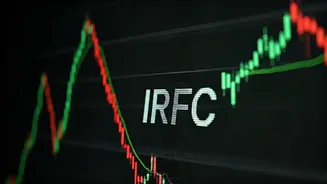Dividend Stock Overview
Dividend stocks are shares of companies that distribute a portion of their profits to shareholders. These payouts, known as dividends, are typically made
on a per-share basis and can provide a regular income stream for investors. The appeal of dividend stocks lies in their potential to generate returns beyond any capital appreciation. Interim payouts refer to dividends paid out before the end of a company's financial year, offering investors more frequent income opportunities compared to annual dividends. These payouts can be particularly attractive to investors who want to receive regular income from their investments, especially in a market where capital gains may be less certain. On November 11, 2025, investors were actively looking at such stocks.
Evaluating Dividend Stocks
When assessing dividend stocks, several factors warrant close examination. The first is the dividend yield, calculated by dividing the annual dividend per share by the stock price; a higher yield often suggests a potentially higher return on investment. However, investors also need to scrutinize the sustainability of dividends. Consider the company's financial health, including its profitability and cash flow, to ensure it can continue to pay dividends consistently. Furthermore, the dividend payout ratio, which is the percentage of earnings paid out as dividends, must be assessed. A high payout ratio, while potentially offering a higher yield, may indicate that a company has limited flexibility to reinvest profits in growth opportunities or withstand financial difficulties. Investors should also research the company's dividend history, looking for consistent payments and increases over time. Examining industry trends and the competitive landscape is crucial as these factors can significantly impact a company's ability to generate profits and sustain dividends.
Importance of Timing
The timing of investing in dividend stocks is another critical aspect. Investors should be aware of the ex-dividend date, which is the cutoff point for eligibility to receive a dividend. Those purchasing shares before this date are entitled to the payout; those who buy on or after it are not. This deadline is vital when purchasing a stock for dividend income. Market conditions can also affect the decision. During market downturns, dividend stocks may offer a safe haven due to their ability to provide regular income, even when prices are falling. However, during periods of economic expansion, stocks with higher growth potential may be favored. Investors must also consider the tax implications of dividend income. In some countries, dividend income is taxed at a different rate than capital gains. This factor can influence how investors view the overall return from dividend-paying stocks and the selection of investments within a portfolio. Therefore, investors should understand the applicable tax laws.
Risk Considerations
Investing in dividend stocks does come with risks that need careful consideration. One of the main risks is the potential for dividend cuts. If a company faces financial difficulties, it may reduce or eliminate its dividend, which can decrease the income investors receive and also negatively affect the stock price. Interest rate changes can also impact the attractiveness of dividend stocks. When interest rates rise, fixed-income investments, such as bonds, can become more appealing, potentially causing investors to sell dividend stocks in favor of bonds offering higher yields. Market volatility is also a key factor. Stock prices can fluctuate, particularly during periods of economic uncertainty. This volatility can affect both the capital value of an investment and the perceived stability of the dividend income. Investors should diversify their portfolios to mitigate these risks, spreading investments across various sectors and companies to reduce exposure to individual stock performance and sector-specific risks.











